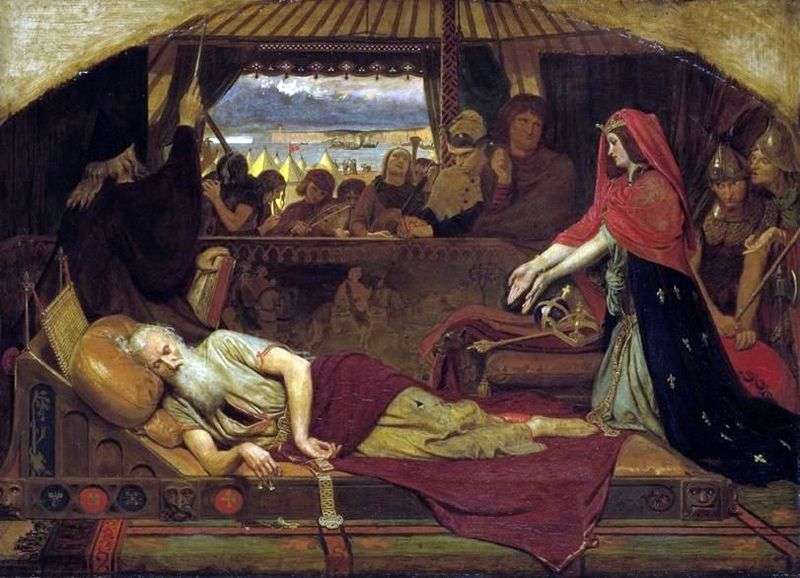
In 1848, Browne saw William Charles Macready as King Lear at the London Marylebone Theater. Makridi was 55 years old, and he gained international fame as a great performer of the roles of Shakespearean heroes and villains. Perhaps it was his game that inspired Brown to create this painting, but the artist’s passion for the play began much earlier with the creation of a series of pencil and ink etudes that illustrated various scenes of the tragedy.
The plot of the picture is taken from the fourth act of the play: Lear is sleeping in the tent of Cordelia in the French camp near Dover. The doctor, standing with his back to the audience, with a wand in his hands, orders the musicians to play louder to wake the sleeper, but Cordelia stretches out her hands and looks with pity at her elderly father, not wanting to be disturbed.
You can see the dirty leg and the ragged clothes of the king. Brown depicts on the canvas numerous details – for example, horsemen with hawks and a hound, brought here from a tapestry from Bayeux, as well as wooden carvings on the bed on which Lier lies. Brown was actively studying the history of the costume; in this case, to convey the spirit of the Shakespearean play, he dresses up his characters in the costumes of the 6th century – a period when, in his words, “paganism was still alive, and the darkest deeds were going on.”
“King Lear” was sent to the Free Exhibition in 1849. Brown was praised for his excellent technique, but the painting was not sold, and in an attempt to find a buyer the artist redrawn the face and figure of Cordelia. Finally, the picture was acquired by the architect John Seddon, although later Brown bought out “King Lear” and, at the request of his patron, sold in 1858 a scum to Thomas Plint. The plinth remained dissatisfied with the face of Cordelia and the veil, and two years later the painting was sold to James Lizerta.
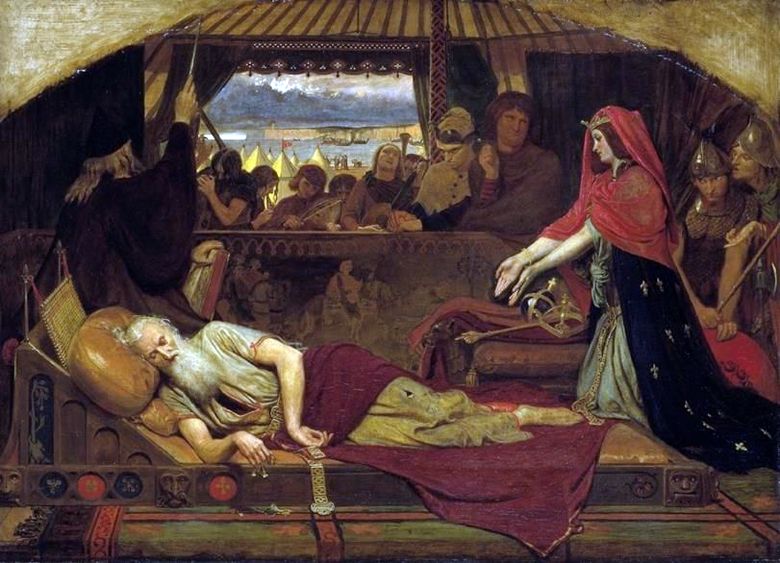 Lear et Cordelia – Ford Madoxon Brown
Lear et Cordelia – Ford Madoxon Brown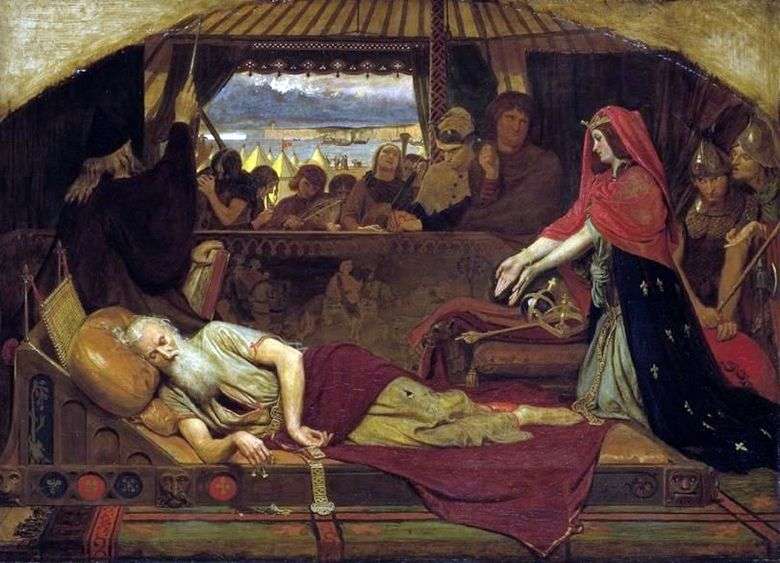 Lear y Cordelia – Ford Madoxon Brown
Lear y Cordelia – Ford Madoxon Brown Labor by Ford Madoxon Brown
Labor by Ford Madoxon Brown Jesus washing Peter’s feet by Ford Madoxon Brown
Jesus washing Peter’s feet by Ford Madoxon Brown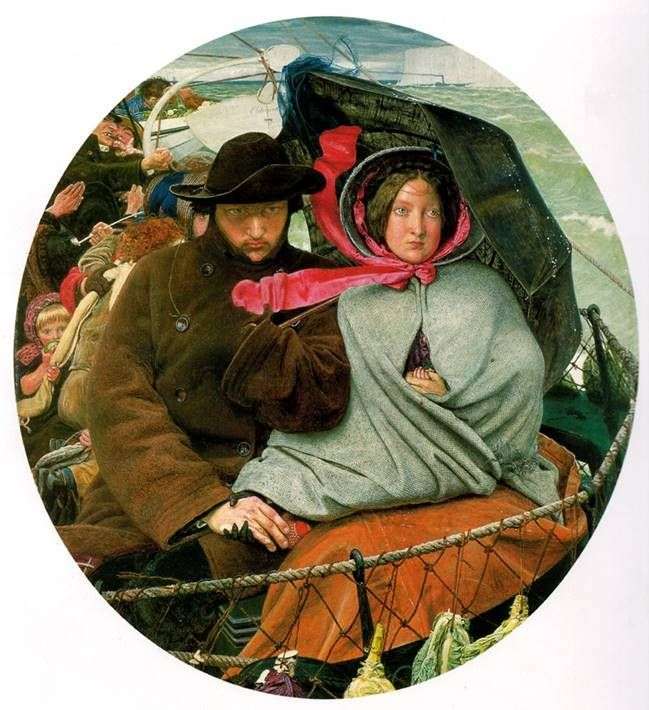 Farewell to England by Ford Madoxon Brown
Farewell to England by Ford Madoxon Brown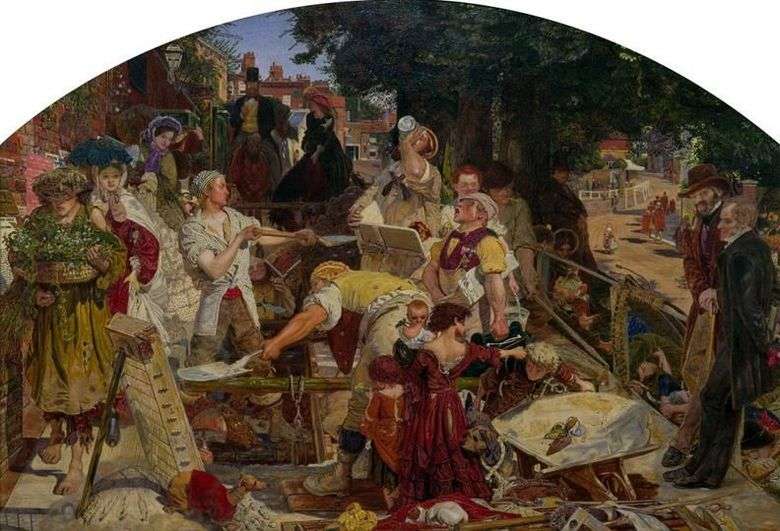 Trabajo – Ford Madoxon Brown
Trabajo – Ford Madoxon Brown Travail – Ford Madoxon Brown
Travail – Ford Madoxon Brown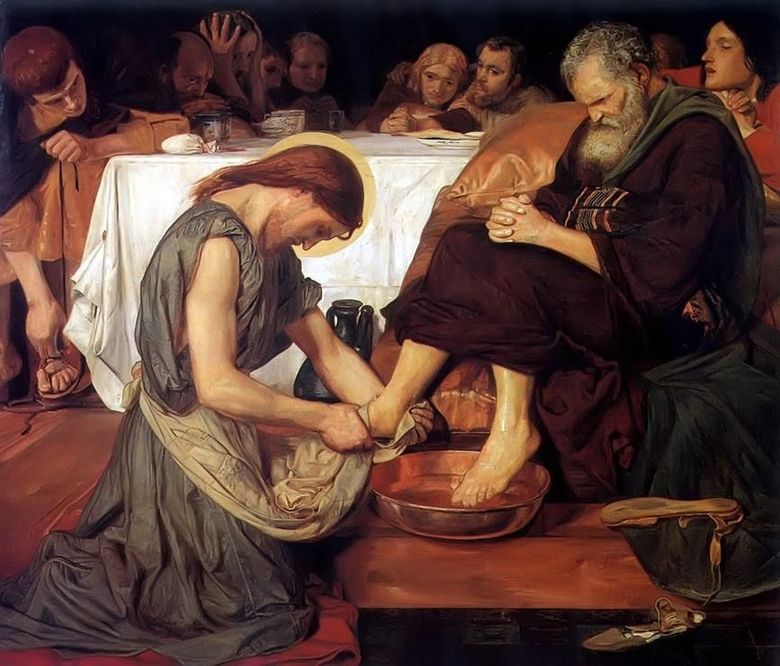 Jésus lave les pieds Peter – Ford Madoxon Brown
Jésus lave les pieds Peter – Ford Madoxon Brown